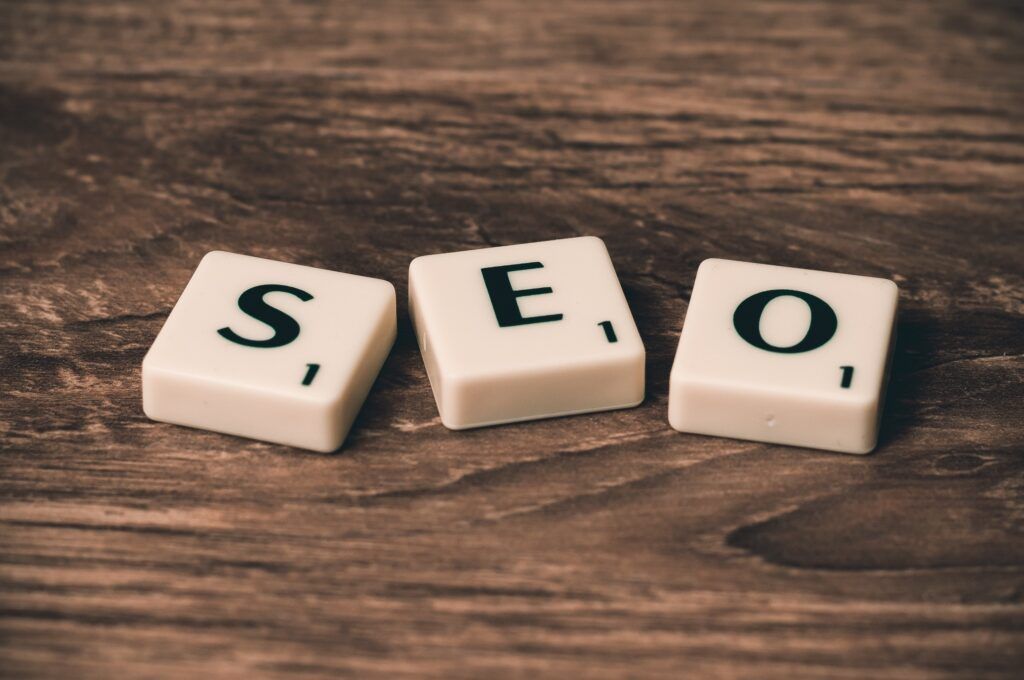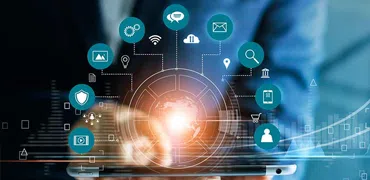SEM vs SEO: Understanding the Key Differences for Digital Growth

- SEM vs SEO: What is the Difference?
- Which Approach is More Effective for Immediate Results?
- How Can a Combination of SEM and SEO Enhance Marketing Efforts?
- What are the Key Elements to Consider When Integrating SEM and SEO into a Marketing Strategy?
- How Does SEM Impact the Overall Marketing Budget Compared to SEO?
If you are a digital marketer or want to pursue a career in marketing, understanding the differences between Search Engine Marketing (SEM) and Search Engine Optimization (SEO) is crucial. Furthermore, for SEO professionals and digital marketers, grasping these distinctions is imperative to optimize their marketing mix effectively. This blog post delves into the nuances of SEM vs SEO, highlighting their unique features and collaborative power in boosting online visibility.
SEM vs SEO: What is the Difference?
SEM and SEO represent two diverse approaches to digital marketing. Let’s take a closer look at the key differences between these two strategies to further understand the SEM vs SEO comparison and their role in digital marketing efforts.
1. Definition and Focus
One of the key SEM vs SEO differences is based on focus. For instance, SEO, a subset of SEM, is focused on optimizing a website to rank higher in organic search results. Conversely, SEM encompasses both SEO and Pay-Per-Click (PPC) strategies, targeting both organic and paid search results for maximum exposure. Hence, SEM’s broader scope includes the targeted approach of SEO.
2. Nature of Search Results
The nature of search results is another difference vis-à-vis SEM vs SEO. Organic search results are the primary target of SEO and appear based on their relevance and authority. Additionally, this is not payment based. Meanwhile, SEM also targets paid search results, marked as “sponsored”, offering immediate visibility for a fee. Therefore, while SEO enhances your organic presence, SEM leverages both organic and paid channels.
3. Strategies and Techniques
SEM vs SEO strategies and implementation are distinct from each other. SEO involves on-page, off-page, and technical optimization. On-page SEO includes elements like meta descriptions and keyword-rich content, whereas off-page SEO focuses on external factors such as backlinks. Technical SEO optimizes website structure for search engine indexing. In contrast, SEM integrates these SEO strategies with paid advertising tactics such as PPC and display ads, providing a comprehensive approach to digital marketing.
4. Timeframe for Results
Another crucial SEM vs SEO difference is the timeframe of results. SEO is a long-term strategy requiring months to yield significant results. However, SEM can deliver immediate outcomes with the launch of PPC campaigns. Thus, while SEO builds enduring online visibility, SEM offers quick wins in the digital landscape.
5. Cost Implications
The cost of implementation when it comes to SEM vs SEO is also different. SEM involves costs associated with click-based advertising, whereas SEO primarily requires investment in content creation and website optimization. Consequently, while SEO is cost-effective over time, SEM demands a more immediate financial commitment for quicker results.
6. Long-Term Value and Sustainability
SEM Vs. SEO also differs in sustainability. SEO provides long-lasting benefits, with high-ranking pages continuing to drive traffic over time. On the other hand, SEM’s impact is largely dependent on ongoing investment in advertising. Therefore, SEO offers enduring value, while SEM delivers immediate but potentially transient benefits.
Which Approach is More Effective for Immediate Results?

To discover which one to choose if time is of the essence, let’s consider the following:
1. Time to Visibility
SEM offers rapid visibility. As soon as you launch an SEM campaign, it can start driving traffic, making it ideal for urgent goals. Conversely, SEO is a slower process, typically requiring months to improve search rankings significantly. Therefore, it is important to consider SEM vs SEO strategies based on immediacy needs
2. Financial Aspect
SEM often involves higher immediate costs due to its pay-per-click nature. In contrast, SEO is more cost-efficient over time, focusing on organic growth without direct per-click expenses. So, take SEM vs SEO cost benefits into account during budget allocation.
3. Longevity and Sustainability
While SEM can quickly boost sales or promote specific offers, its effects are short-lived without ongoing investment. SEO, although slower to start, provides enduring benefits, enhancing long-term online visibility and brand presence.
4. Complementary Strategies
SEM and SEO can target the same keywords. This dual approach leverages SEM for immediate impact and SEO for sustained organic growth, thereby enriching the overall marketing mix.
ALSO READ: What is On-Page SEO and Why is it Essential to Improve User Experience?
How Can a Combination of SEM and SEO Enhance Marketing Efforts?
While SEM vs SEO comparisons highlight significant differences, it is also clear that they need to work together to maximize digital marketing strategies. Let’s see how:
1. Optimize Paid Search With Organic Insights
Combining SEM and SEO enables you to use organic search performance to optimize paid campaigns. By analyzing high-performing keywords from SEO efforts, you can enhance SEM strategies for better Return on Investment (ROI), thus achieving greater online visibility.
2. Enrich Content Strategy Through SEM Data
SEM keyword insights can significantly enrich your SEO content strategy. This approach ensures that the content aligns with both SEM and SEO goals, thereby attracting more traffic and improving engagement.
3. Utilize Competitive Analysis From Both Spectrums
Leveraging both paid and organic data offers comprehensive competitive research. This dual approach helps in identifying gaps and opportunities in digital marketing strategies, enhancing the overall marketing mix.
4. Infuse SEO Techniques Into SEM
Incorporating SEO best practices into paid campaigns can optimize costs and increase efficacy. Similarly, integrating SEO strategies into SEM can improve ad performance and quality scores.
5. Promote Team Synergy
Fostering communication between SEO and SEM teams enhances collaboration. This unified approach ensures alignment in strategies and objectives, further boosting the effectiveness of the combined efforts.
6. Leverage the Power of Remarketing
Targeting users who have previously interacted with your brand can significantly increase conversion rates and bolster your overall digital presence. Therefore, remarketing is a pivotal strategy where SEM and SEO initiatives work in tandem.
7. Focus on Landing Page Optimization
Optimizing landing pages is key in harmonizing SEM and SEO efforts. Effective landing pages not only boost SEM campaign conversions but also enhance SEO performance, leading to a more cohesive digital marketing approach.
ALSO READ: Will AI Replace SEO: What Can We Guess From 10,000 Years of Human History?
What are the Key Elements to Consider When Integrating SEM and SEO into a Marketing Strategy?

A. Key Elements for Integrating SEO
1. Focus on Relevant, Long-Tail Keywords
Targeting relevant, long-tail keywords is crucial in SEO for enhancing online visibility and better targeting your audience.
2. Prioritize In-Depth, Quality Site Content
Creating in-depth, quality content is essential for effective SEO. It can improve a site’s relevance and authority.
3. Ensure a Fast-Loading Website
Having a fast-loading website is key for SEO because it enhances user experience and search engine rankings.
4. Implement User-Focused Design
A user-focused design ensures a positive and engaging user experience.
5. Adopt Responsive Design
Critical for SEO, responsive design makes a site accessible and user-friendly across all devices.
6. Optimize for Voice Search
Voice search optimization is an emerging aspect of SEO, catering to the growing use of voice-activated devices.
7. Leverage Local SEO
Local SEO is vital for businesses to help target local markets and enhance visibility in local search results.
8. Utilize SEO Analytics
SEO analytics are crucial for monitoring and refining a business’s SEO strategy, providing insights into performance and opportunities.
B. Key Elements for Integrating SEM
1. Assess Suitability for Paid Search
Make sure the business is well-suited for paid search, which is an important aspect of SEM for targeted marketing efforts.
2. Allocate Budget for PPC Advertising
Budgeting for PPC advertising is essential in SEM for effective and sustainable campaign management.
3. Set Clear Goals
Setting clear, achievable goals is crucial for SEM to guide paid search strategies and measure success.
4. Simplify Landing Page Experience
Striving for a simple, effective landing page experience in SEM is key to enhancing user engagement and conversion rates.
5. Develop a Tracking Framework
Developing an insightful tracking framework enables detailed performance analysis and strategic adjustments.
How Does SEM Impact the Overall Marketing Budget Compared to SEO?
Search Engine Marketing (SEM) impacts the marketing budget more significantly than Search Engine Optimization (SEO) due to its inclusion of paid strategies. While SEO focuses on unpaid website optimization and content creation, SEM adds the cost of pay-per-click campaigns. Consequently, SEM can demand a larger budget, offering quicker results compared to the more gradual impact of SEO. This difference often leads businesses, especially those with limited funds, to initially prioritize SEO before scaling up to include SEM strategies.
ALSO READ: What is SEO? How to Build a Winning SEO Strategy
In conclusion, understanding the differences and synergies between SEM and SEO is imperative for any digital marketer. Moreover, these insights will help you make informed decisions to optimize your marketing mix effectively. Finally, to further enhance skills in this domain, consider exploring Emeritus’ digital marketing courses from top universities to take your next step in the right direction!
Write to us at content@emeritus.org
























